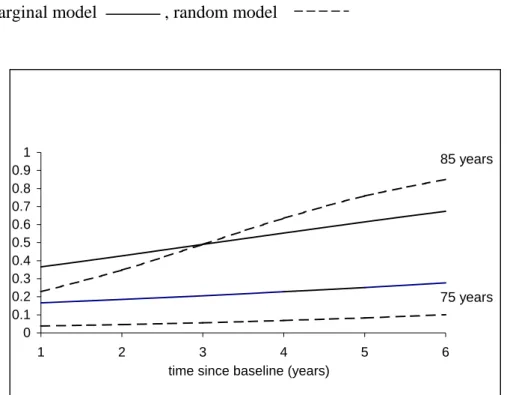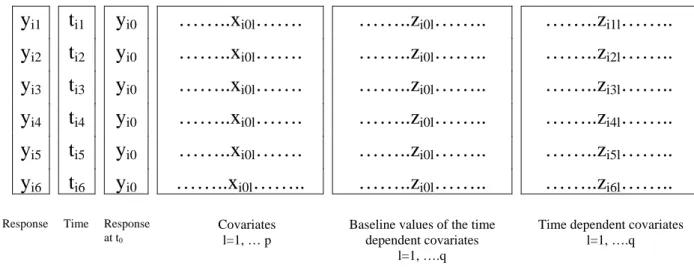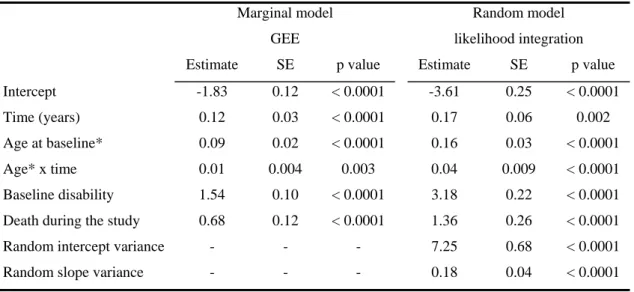Choosing marginal or random-effects models for longitudinal binary responses: application to self-reported disability among older persons.
Texte intégral
Figure




Documents relatifs
Using detailed data collected in 2003, we investigate differences in health status by origin country within the older immigrant population living in France using a self-rated
We focus on Marginal Longitudinal Generalized Linear Models and de- velop our variable selection technique for these models.. Generalized Linear Models (GLM, McCullagh and Nelder,
Therefore, this study was conducted to assess the incidence of needle-stick injuries among dentists in the north of Jordan and describe their attitudes towards reporting
In each case, we enumerate a sequence of models (each spec- ified by values for learn, prior, guess, slip, sample size), and for each of those models, we generate a large number
Finally, we discussed the limi- tations of the two models we used that focused on the late acceleration of the cognitive decline before dementia diagnosis and we proposed an
There are no additional targeting gains at the point of the award decision, implying that changes in average health conditions of awardees were fully driven
New selection criteria, including the expected number of days with mastitis, the probability of no mastitis during lactation and the probability of at most a certain number of
In this section, we adapt the results of Kappus and Mabon (2014) who proposed a completely data driven procedure in the framework of density estimation in deconvo- lution problems

